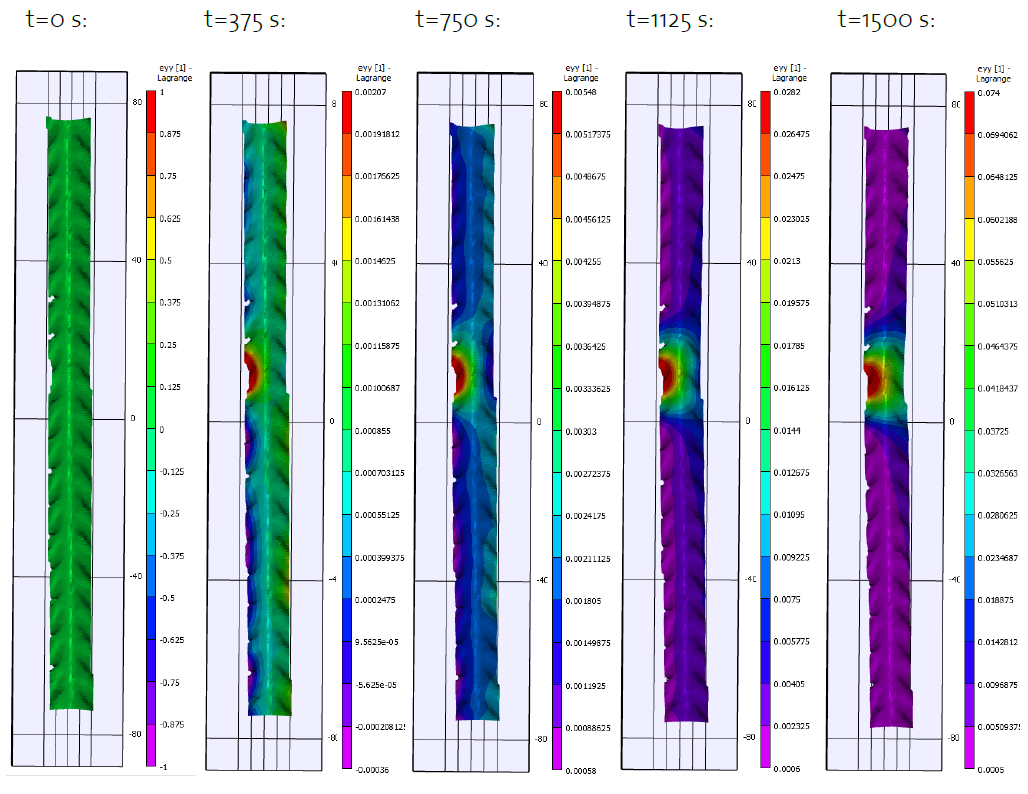Analysis of the deformation capacity of artificially corroded reinforcing bars
(original title: Analyse des Verformungsvermögens künstlich korrodierter Bewehrungsstäbe)
Author: Manuel Stocker
Language: German
Abstract
This Master’s thesis investigates the deformation behaviour of locally corroded reinforcing bars. A reinforcing bar is simulated as a system of longitudinally coupled sections with varying area of cross-section. The stress-strain behaviour is assumed to be constant for all sections. In a first step, the behaviour is modelled using a trilinear approach. In a further step, non-linear hardening is approximated by a polynomial approach according to Mander [5]. The assumption of a trilinear stress-strain behaviour leads to an increased deformation capacity of the total reinforcing bar compared to non-linear hardening.
The analytical model is compared to the results of 20 tensile tests of locally damaged reinforcing bars. Specimens vary regarding type and degree of damage, damage length and diameter. Moreover, the specimens differ regarding their stress-strain behaviour (with or without yielding plateau). Several methods were studied to measure the actual cross-section area along the reinforcing bar’s axis.
Results show a strong influence of the degree of corrosion on the deformation and load carrying capacity of the whole reinforcing bar. They further indicate an influence of the damage geometry on the stress-strain behaviour of the damaged section.

